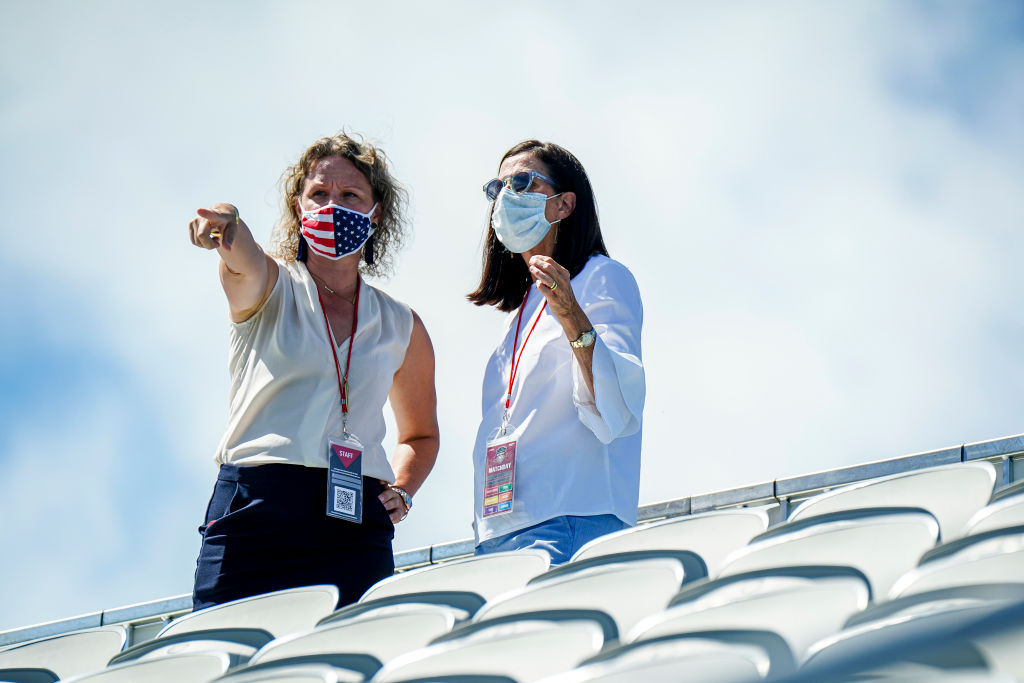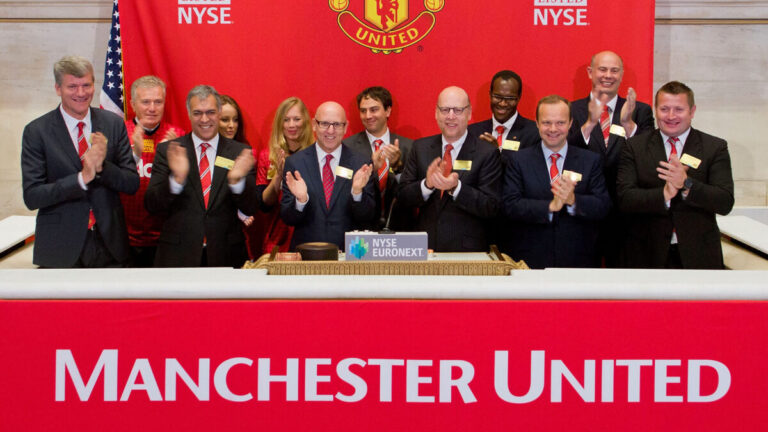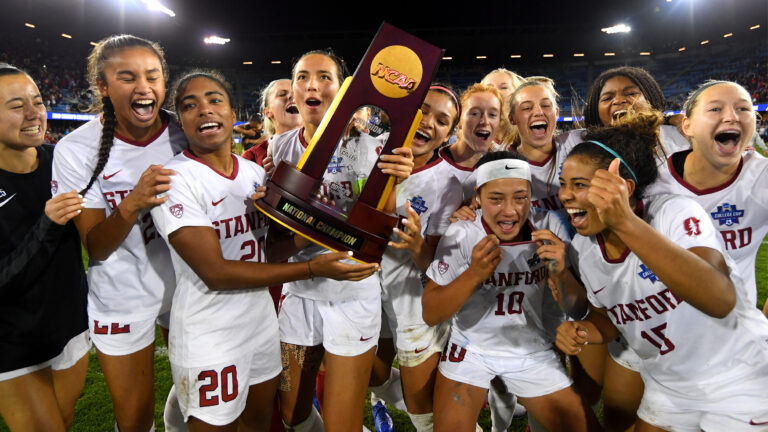Having Beaten the Pandemic, the NWSL is Promoted to Big Leagues
Why this matters
With strong leadership from Commissioner Lisa Baird and headliner investor groups, the NWSL has emerged from the pandemic stronger than ever before. Which exciting directions can the league, and women’s sport in general, take in the future?
This week marks the anniversary of Lisa Baird’s first day on the job as the commissioner of the National Women’s Soccer League. Baird knew the job – which had not been filled in three years – would be a challenging one; but, of course, she had no idea. Within weeks, with a global pandemic having shut down all sports around the world, the 8-year-old league was in dire straits. So Baird turned to the government’s emergency Paycheck Protection Program for a loan that allowed the league to avoid closing its doors while it regrouped, and to plot its way out of existential danger.
Remarkably, as Baird celebrates her first anniversary on the job, the NWSL is in the strongest position it has ever been – indeed, it is in a stronger position than any of the previous attempts at a professional women’s domestic league has ever been. The perennial quest to fully capitalize on the popularity of the youth game and of the US Women’s National Team of Olympic and World Cup fame with a sustainable domestic league remains a formidable challenge, but it no longer seems a quixotic one.
Far from it. Baird, who came to the job with an impressive mix of corporate marketing and NFL and Olympic experience, made the most of the grace period provided by the government loan, and the momentum attained coming out of the 2019 World Cup. The league signed a new TV deal with CBS, and was the first team sports league in the US to return to play with a successful tournament – the “Challenge Cup” – held in a safe “bubble” in Utah. Mid-pandemic, the league also announced sponsorship deals with Verizon, Procter & Gamble, and Google. Also last summer came the blockbuster announcement of a celebrity-backed expansion “Angel City” team in 2022. The ownership group includes a who’s-who of Hollywood stars (Natalie Portman! Jennifer Garner! Eva Longoria!) and athletes (Serena Williams! Mia Hamm! Julie Foudy!). In January, Naomi Osaka, the 23-year-old tennis phenom, also joined the league, becoming a part-owner of the North Carolina Courage.
“After the last women’s World Cup, I could feel the groundswell,” Osaka said when the deal was announced.
“When the viewing figures last summer were better than the MLS, I realized that this was something big – and something I want to be part of.”
Meanwhile, it’s been announced that former first daughters Chelsea Clinton and Jena Bush Hager have both invested in the Washington Spirit. And, perhaps most significantly of all as a validator, the dominant European club Olympique Lyonnais acquired the Washington state NWSL. franchise back in December of 2019.
Baird capped all this gathering momentum in January by announcing the league’s emancipation from the U.S. Soccer Federation, which founded and managed the league for its first nine years. The domestic league’s dependence on U.S. Soccer, which oversees the sport’s grassroots and the national teams that compete internationally, spoke volumes of how weak the domestic league has been in comparison to the national team. This emancipation is no small matter, either as a symbolic or operational matter.
In an interview released Monday on Sarah Spain’s “That’s What She Said” podcast, Baird called this move consistent with her plan from day one of creating a “financially sustainable league” that can be proud of its independence and its diverse group owners (who now include Spain, a new investor in the Chicago Red Stars). Baird said she is pleased with the steps the league has taken, and that while it will continue partnering with U.S. Soccer and MLS, the NWSL is “not going to be reliant on a men’s league.”
The TV ratings last summer, which caught Osaka’s attention, broke all records for domestic women’s soccer and surpassed CBS’ expectations. These rights will become all the more valuable to the media company as it launches its Paramount+ streaming service. Overseas, meanwhile, fans can watch N.W.S.L. games streamed on Twitch.
This expanding accessibility of televised women’s sports (NBC and Peacock have picked up rights for the English FA Women’s Super League) has been noticed by fans, according to a poll conducted by the Global Sport Institute at Arizona State University and Latino Decisions. The poll showed a high awareness among U.S. and United Kingdom respondents that women’s sports can be found on TV (67.4% of women and 81.3% of men polled in the U.S. said women sports are broadcast, and 66% of women and 71.7% of men in the United Kingdom saying so). And 57% of male respondents in the U.S. said they would watch more women’s sport if more were televised, as compared to 33% women answering the same, which belies the stereotype of women’s sport being niche women’s programming.
Baird and her league owners have reason to be bullish as they look forward to the NWSL’s 10th anniversary in 2022. This year, Louisville Racing will become the 10th team when the 2021 Challenge Cup kicks off in April. Los Angeles and Sacramento will join in next year. And you can expect more celebrities and more European soccer operators to seek admittance. The valuation of these NWSL franchises is roughly on a par with what the men’s MLS franchises were priced at when that league launched in the mid-1990s, and from those early seven-figure valuations, the latest MLS expansion team paid an astonishing $325 million to join the league.
None of this is to suggest the NWSL faces an easy glide path to similar riches, even if it can already boast something the MLS cannot: its status as one of the world’s leading leagues in the sport.
The accelerating globalization of the world’s default sport does pose challenges, as well as opportunities, for Baird and her league. She may pride herself on not depending on a men’s league, but in Europe, established men’s clubs are starting to invest heavily in building the women’s game by developing teams within their clubs, as in the case of Olympique Lyonnais and the big Spanish clubs. In England, the last few years have seen the emergence of formidable Manchester City, Arsenal, Chelsea women’s teams that can leverage the existing brand and fan base of their Premier League counterparts.
The deeper pockets of these European clubs are attracting American talent, as evidenced by Catarina Macario’s recent decision to forego the NWSL upon leaving Stanford before her senior year. The 22-year-old star, considered the most promising player of her generation, signed with Olympique Lyonnais. And last fall, partly as a result of a shortened season in the U.S., a number of American stars (Alex Morgan, Tobin Heath, Christen Press, Rose Lavelle, and Sam Mewis) signed with English clubs. Some of these were short-term loans to allow players to remain in form for the Olympics, but with the growth of the game across the Atlantic and with US players’ choices becoming less beholden to the federation, over time we can expect these moves to become more common.
In addition to the potent competition offered by the English league, the NWSL will have to reassess the sourcing of its own talent development, and whether it can remain as dependent on the NCAA as it has been in the past.
Given Baird’s first-year accomplishments, despite the headwinds of the pandemic, don’t be surprised if more bold moves are in store. The MLS model suggests she could oversee the doubling or tripling of the dozen-team league over time, and that would be an impressive feat if done in a sustainable fashion.
A more intriguing goal would be to do something the men’s league could not do, and address both the talent-development and globalization issues head-on.
What if the NWSL capped its first division at 15 or so teams, and then required subsequent entrants to join in a second division, instituting promotion and relegation between the divisions?
At the same time, the league could lean into globalization by considering a merger with the English FA Women’s Super League, to create a Super Transatlantic Women’s League. The idea of a cross-border super league is the fantasy of plenty of men’s clubs across Europe, but the obstacles remain too thorny. The women’s game, less encumbered by history, tradition, and stranded costs, could catapult past the men and create something truly sensational. A super league of 30 teams, split between its 15-team U.S. and England conferences (each season you could play a third or fourth of your games against teams in the other conference), would immediately attain a critical mass and unquestioned global supremacy that neither league possesses on its own.
It’s just one fan’s dream, my “hey, what if…” proposal from the sidelines. Other fans will have their own. But what matters is that after what the NWSL has gone through in the past year, including its near-death experience, it’s great to be able to imagine the women’s game future, knowing it will be played.





